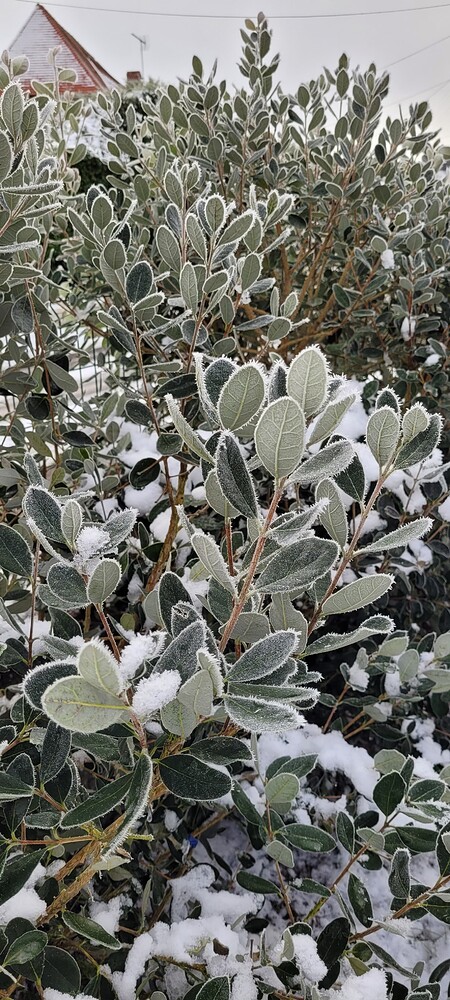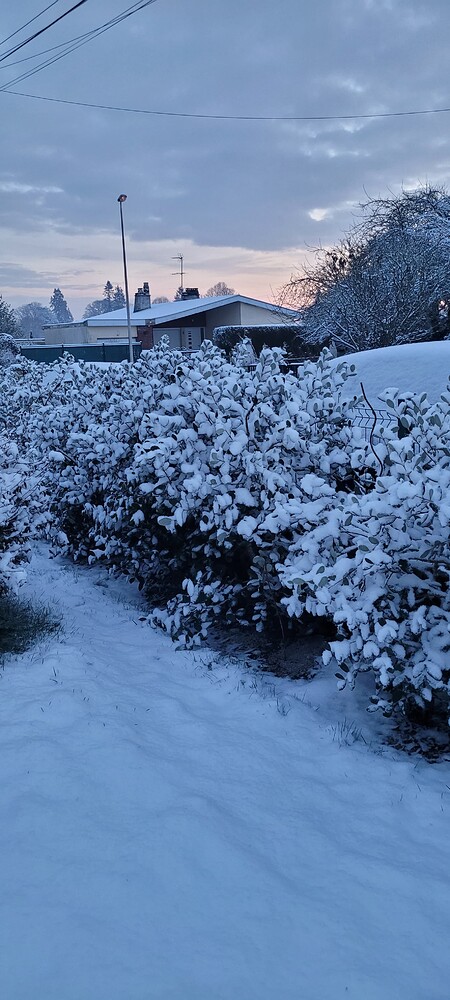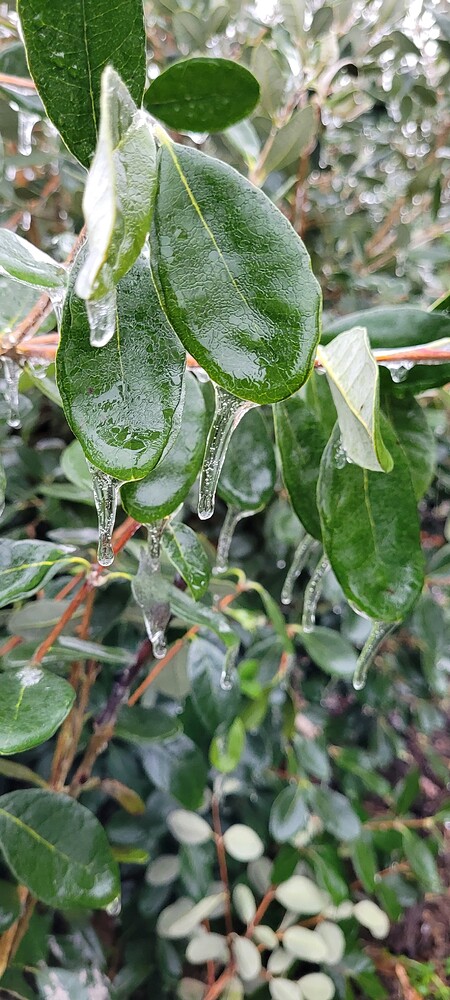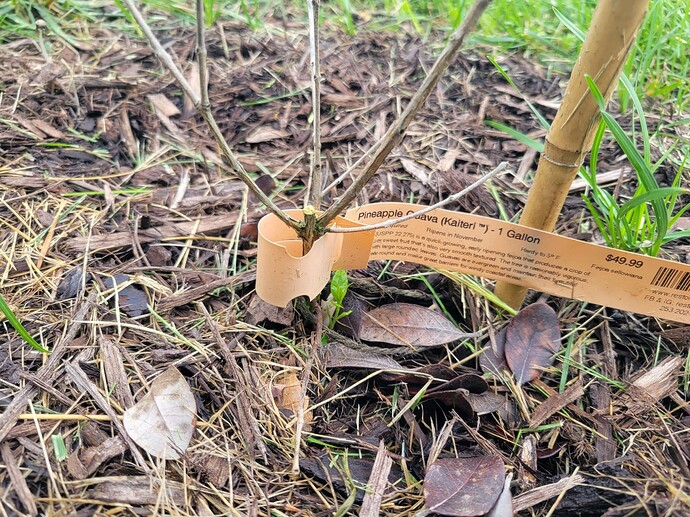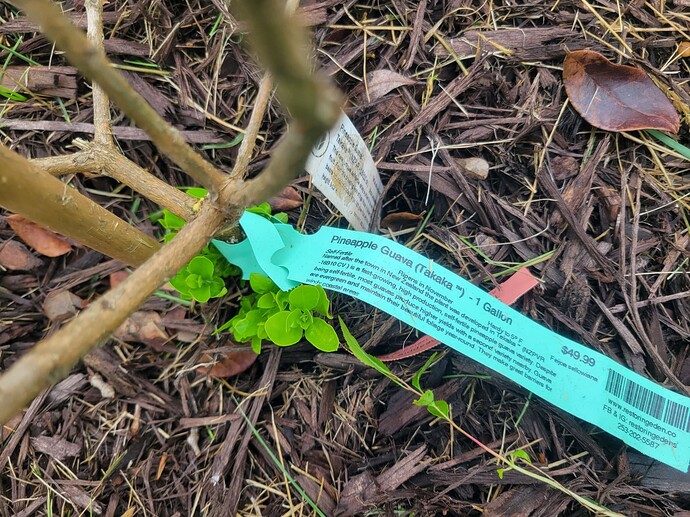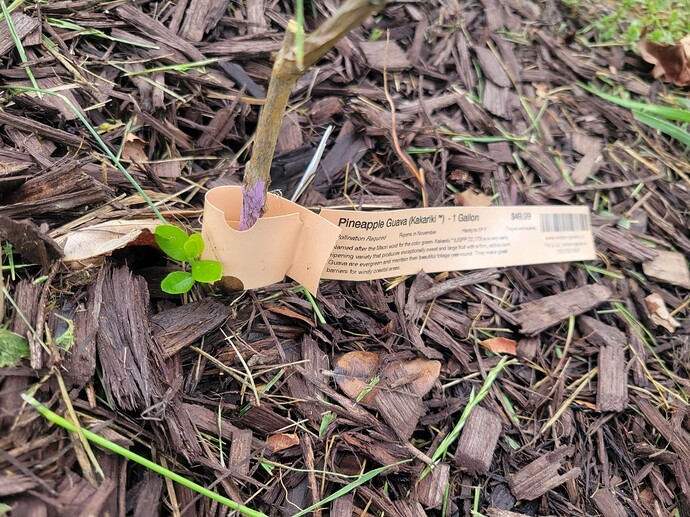Also if you scroll to comment number 6 at the beginning of this thread (back in 2017) those feijoas did not make it through 10F, they were nice plants, not the toothpicks I got now btw. If these die I am done with experimenting and will shelter my next batch.
Low soil density and lack of moisture content may contribute to feijoa die-off during hard freezes, as many of the fine roots are very shallow.
When I shook my large bush, I then had to shake myself to remove leaves from hat and clothes.
The raked leaves nearly filled a 32-gallon garbage can.
Are the more resilient ones mulched more heavily and/or in awful clay?
in the coastal Florida panhandle, zone 9a, my feijoas have had no problems even during hard freezes, but we don’t go lower than the upper teens here.
This year I consider that I have not had any severe cold. 2 or 3 periods of freezing, up to 10 days in a row between 17 and 15°F.
I considered no damage. New Zealand varieties are fine. No protection
But varieties of seedlings from unselected ornamental plant seem to me to be the most resistant. 2 seedlings have a maturity between Arhart and kakariki… and fruits of 160/180 grams.
For the record, these seedlings had endured their first year down to 0°F without losing their leaves.
I notice this year that varieties with small leaves are less sensitive to cold.
Those with large leaves had curled foliage and some leaves fell later at the top of the terminal shoot. On small leaves no symptoms of cold.
My feijoas are growing the flower buds now…
That’s like 4 months ahead of here, Luis! You really do have a pretty remarkable climate for fruit there.
i will show it…
We didn’t got cold this year… everything is pushing flowers…
Do you place some kind of polyester covering over the fabric? I figured I could wrap each one next winter and anchor it down w/ the central and additional side sticks of bamboo or something. I wish I had known about that option before as now I have to hope for new leaves to sprout in a month or two to avoid replacing all of the plants. Thanks for the suggestion!
Yes, I had a layer of poly on top of the fabric. This should help to keep the fabric dry, which should make it a better insulator than wet fabric.
Could you recommend a specific polyester covering, or an effective variation of it?
I use the same material that goes on my low poly tunnels, originally 2 mil vapor barrier sheets. Since this is no longer available, I use medium poly drop sheets. Any plastic covering will work for protection from cold; it doesn’t even have to be clear. I would avoid 1 mil sheets because they are a bit too flimsy.
Been growing Feijoa’s for about 10 years. The cold hardiness varies. I have had three varieties Nazametz, Coolidge and Mammoth. Mammoth was only cold hardy down to about 10F then it died, no regrowth from the roots, just dead. Nazametz and Coolidge will take damage on newest growth at 10F but not too bad. Their kill point is around 7F or so but this only top kills them. If an established plant it will grow back from the roots. Even then the top kill varied even in the same cultivars, some top killed completely, some top killed down to the lowest branches with survived. This is probably due to snow insulating those lower branches, this was not constant between all of them. Some completely top killed, some did kill all the top whereas the snow was the same for all, just some variation I guess. It got down to zero on night and I desperately covered these with tarps and only experienced damage on the young branches in contract with the tarp with the rest making it. This is zero digress for only about 12 hours. If your plant is less established then it may well be killed at higher temps than my established trees. If you have a small new tree and expect cold weather get a large trash can and cover the plant sealing the edges so no cold air can get in. This can raise the temp just a few degrees inside and can mean the difference between life and death. Done this with young figs an it worked.
With the warmer temperatures here to stay for a while, I checked my feijoas and 2 of the 5 (Marion and Anatoki) have no growth, but the remaining 3 (Kaiteri, Kakariki, and Takaka) have a little growth around the base just under the mulch poking out. I had already ordered replacements for all five a few weeks ago because I was convinced that nothing would grow back at all as the branches were and still are completely bare. At this rate of growth, wouldn’t it just be best to replace them and shelter them better next winter as opposed to hoping they’ll fruit faster in later years after surviving a single winter?
Aren’t they grafted?
My 2 mammoth plants appear dead. We hit about 12F last winter.
I also lost a potted Kaiteri.
All others including seedlings have survived.
